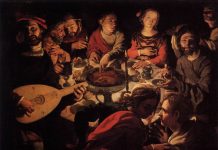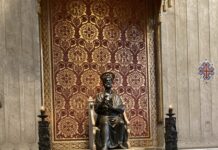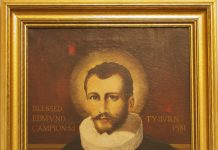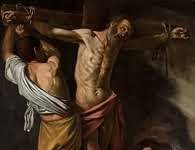Children of divorce, researchers say, often enter adult life with an impaired memory. No one knows for sure why their childhoods seem less vivid. One explanation is that memory works best when it can graft details onto a continuous narrative. Divorce ruptures that narrative. For much of the twentieth century Communists tried to inflict just such a rupture in the lives of eastern Christians. When the Ukrainians fled to Canada, they kept alive the memory of Faith, in part by remaining resolute in their customs, including church design.
What’s in a dome? As I mentioned last month, the Emperor Constantine was the Church’s first architectural patron. The Church’s first prototype was the basilica. Her second was the mausoleum. This round Roman structure was a house for the dead, essentially a grand tomb. Don’t believe the bad press. After Constantine’s conversion he attempted the unthinkable: the Christianization of an empire. He made divorce difficult, gave public standing to Sunday, banned gladiatorial games, and tried to stop the abduction of little girls. Not bad for a rough warrior. The signature temple for the new Christian rule would be Constantinople’s domed Hagia Sophia, the “mother church” of all eastern houses of worship. (The present iteration was built by Justinian I.) There’s more. In 1453, Moslem invaders razed the city and turned the church into a mosque. To this day, every dome bears silent witness to the civilizing influence of faith upon culture, and how that culture can be lost.

One of the distinctive marks of the Canadian prairie, at least where I grew up around Saskatoon, are the twisty onion tops that dot the horizon. The Ukrainians brought with them more than pierogies. Along with the liturgy of St. John Chrysostom and the memory of living saints (like Bl. Vasyl Velychkovsky, a martyr at the hand of the Soviets), they brought their dome. Let us not forget their lessons.












